Frans Hals (1582-1666) was a painter from the Dutch Golden Age. His style of painting was lively, best expressed in his loose and unconcealed brushstrokes. What set him apart from his peers was the cheerful mood in his works, in which his subjects convey a sense of “joie de vivre”. This quality in his style revolutionize portraiture paintings. He also plays a great role in group portraiture, Hals was a master at capturing individuality and distinguished each character through poses and facial expressions. He painted many members of society: wealthy citizens, officers, councilmen, musicians, and even the loud mouthed fishwives and drunkards.
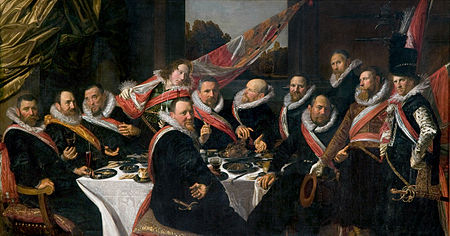
At this point of his career, Hals was not a well known portrait painter when he made this painting. However, he nails the composition by giving the illusion of casual conversation and space. Unlike group portraits from the past, Hals’ figures aren’t stiff or in dull poses. Furthermore, the group dynamic of political status is represented and each individual has a personalized expression. Not only do we see portraiture, Hals shows off still life and landscape in the piece as well. It’s clear as to why this painting was a success for Hals, as a reward he was commissioned to do additional portraits of the subjects and their relatives.
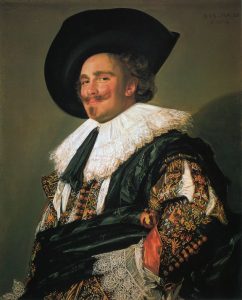
This is considered the most highly regarded piece of all the Baroque portraits, and I can see why. Despite the title, the subject appears not to be laughing, however he does have a cheeky smile further emphasized by his glorious upwards mustache. And when looking at his eyes and flushed cheeks, he looks like he’s holding in a fit of the giggles. Hals directed the viewpoint to be at a lower angle and had the subject be at a slight turn with his hand on his hip, this accentuates the incredible detailing on his garments. The delicate lace, colourful embroidery, and thick textiles! This piece is lively and has an aspect of spontaneity from the subject’s joyful mood.
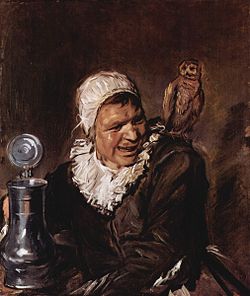
The unrestricted brushwork and freedom in the handling of paint is classic Hals style. This portrait used to be interpreted as a mythical witch figure but now it is discovered that Malle (defined as “loony”) Babbe was an actual individual who lived in Haarlem. Her name was Barbara Claes and she was a resident at Het Dolhuys, a local hospital for the mentally ill. The beer mug suggests a pub scene, in this case the owl might be a reflection of the Dutch saying, “drunk as an owl”. Although the painting at first glance is lighthearted, knowing the backstory makes it eerie, perhaps even a little sad.
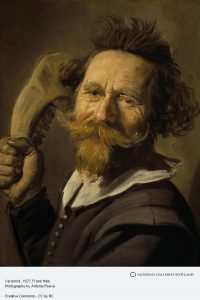
This painting demonstrates Hals’ impressive skill in communicating personal traits and character. The man is most likely Pieter Verdonck, an aggressive fellow who was a member of the Mennonites in Haarlem. This is seen in his tousled hair and the jawbone in hand ready for a swing.
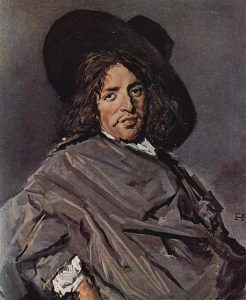
Although this is not one of my favourites from Hals, it is an important representation of his later work. This arrangement is more contained and reserved compared to his other pieces. The most significant change would be in colour, we see black and grey dominating the canvas rather than a vivid palette. However this change in style was not a personal choice, it was the sitters who’ve changed. The Protestants he depicted had a somber wardrobe.
Sources:
https://search-credoreference-com.ezproxy.capilanou.ca/content/entry/ebconcise/hals_frans/0
https://en.wikipedia.org/wiki/Malle_Babbe
https://en.wikipedia.org/wiki/The_Banquet_of_the_Officers_of_the_St_George_Militia_Company_in_1616
https://en.wikipedia.org/wiki/Laughing_Cavalier
https://www.dailyartmagazine.com/nine-reasons-to-smile-with-frans-hals/
https://www.nationalgalleries.org/art-and-artists/5008/verdonck